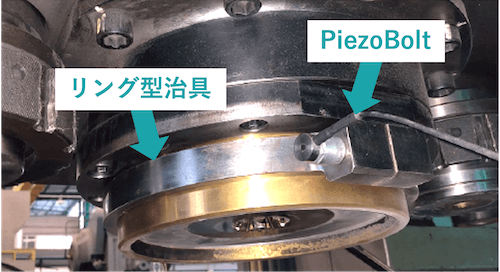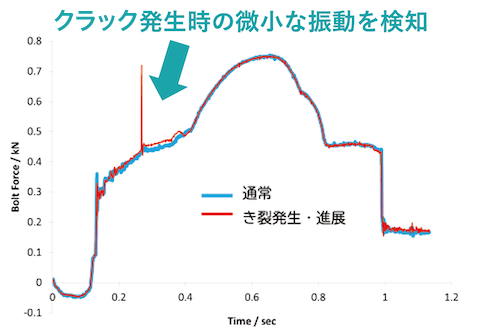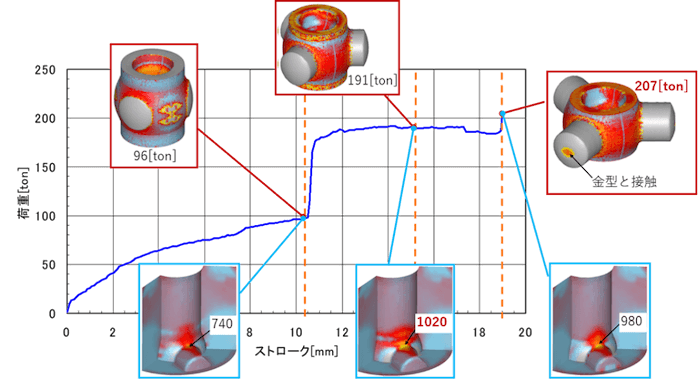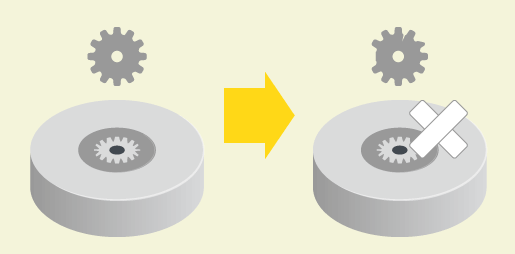
Release Date:2024/11/15
What are Cracks? – Die Crack Detection with Yamanaka Eng’s Load Sensor
What are Cracks?
Cracks refer to the phenomenon of fractures appearing on the surface of a die.
When cracks occur on the die surface, they can transfer to the products, leading to a decline in surface quality or deviations in product dimensions from the specified drawings. As a result, cracks directly contribute to an increase in defect rates.
Therefore, fixing or replacing the dies as soon as possible is crucial.
Causes and Measures for Cracks
There are two main types of cracks:
- Heat Crack: caused by repeated heating and cooling cycles.
- Initial Crack: occurs as an early symptom of fatigue due to high-stress amplitude.
In this section, we will focus on the causes and solutions of initial cracks.
- Fatigue due to high stress amplitude
To ease the stress, several methods can be considered, such as replacing the materials, using larger-sized dies, or dissipating stress through changing the design are common ways. However, each approach has its limits. Another option is applying surface treatment to reduce frictional resistance and delay fatigue progression. Nevertheless, this requires some trial and error to achieve significant results.
With these measures, it is possible to prevent cracks to some extent. While they are effective in reducing the occurrence rate of cracks and delaying their appearance, they cannot completely eliminate the risk of defective products caused by cracks.
Ideally, production should be stopped, and the dies should be replaced just before cracks occur or immediately after they are detected.
In the following section, we will introduce a case study of crack prediction, which has successfully achieved this ideal approach to manufacturing. We encourage you to read on for more details.
Case Study: Prediction of Crack Occurrence to Prevent Defective Products
In this case study, the customer faced the following challenges during the forging process for car components:
- Inability to detect cracks on the surface until the die breaks, leading to cracks being transferred to the products and resulting in defective production.
- Variability in crack detection due to inconsistencies among inspectors during visual inspections.
- High costs associated with frequent die replacements due to short lifespan settings.
Solution
As a solution, we installed the ring-shaped jigs around the die and attached the Bolt Piezoelectric Load Sensors “PiezoBolts“, to the ring. Then we measured the number of cycles until the failure occurred.

※What is the Bolt Piezoelectric Load Sensor “PiezoBolt”?
“PiezoBolt” is a load sensor with an embedded sensor unit using a piezoelectric element inside the bolt. It is capable of measuring minute load changes by leveraging the piezoelectric effect, which generates voltage when force (pressure) is applied.
For more detailed information, please click the link below.
Results
As a result, we discovered that using the PiezoBolt makes it possible to detect micro-vibrations when cracks appear on the die, and to categorize the progression of these cracks based on the number of abnormal wave occurrences until they are transferred to the products.
By counting the number of abnormal waves during the production and establishing a system that triggers an alarm and stops the equipment when the. Preset threshold is exceeded, it is possible to prevent defective products from being released.

Conclusion
We hope you enjoyed this article.
There are some ways to prevent wear of dies and toolings, and this time we have demonstrated a solution with our load sensor. If you think of introducing this solution in your production site, or have troubles with defects other than wear, such as cracks and galling, please contact us.



